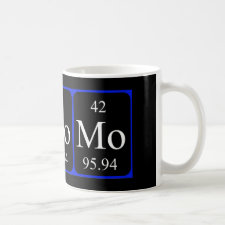
Authors: Guidi G, Korogiannaki M, Sheardown H
Article Title: Modification of Timolol Release From Silicone Hydrogel Model Contact Lens Materials Using Hyaluronic Acid.
Publication date: 2014
Journal: Eye & Contact Lens: Science & Clinical Practice
Volume: 40
Issue: (5)
Page numbers: 269-276.
DOI: 10.1097/ICL.0000000000000033
Abstract: Objectives: The ability of hyaluronic acid (HA) to act as a functional additive in model silicone hydrogel contact lenses to alter the uptake and release characteristics of timolol was investigated.
Methods: Model contact lenses were prepared using 2 primary formulations: 2-hydroxyethyl methacrylate (HEMA) with 3-methacryloxypropyltris (trimethylsiloxy) silane (TRIS) in a 9:1 (wt:wt) ratio or N,N-dimethylacrylamide (DMA) with TRIS in a 1:1 (wt:wt) ratio. Ethylene glycol dimethacrylate (EGDMA) was used as the cross-linker. Four different model lens compositions were explored: unmodified controls, lenses containing HA, lenses that were molecularly imprinted with timolol maleate, and those that were both imprinted and contained HA. Model lenses were then used in subsequent materials characterization, drug loading, and drug release studies.
Results: Hyaluronic acid was shown to have the ability to act as a functional additive in these model contact lenses, significantly increasing the drug loading and release mass. This ability seemed to be independent of molecular imprinting, but its efficacy was related to the concentration of HA contained within model lenses and the concentration of drug loading solution used to facilitate uptake. Timolol release was sustained for a duration of approximately 2 days, and the dose of drug was shown to be controlled by both HA-drug interactions and molecular imprinting within the silicone hydrogels.
Conclusions: Hyaluronic acid, although different than typical functional monomers used in molecular imprinting, can be a useful additive to modify the mass of drug release from model silicone hydrogel lenses. (C) 2014 Contact Lens Association of Ophthalmologists, Inc.
Template and target information: timolol maleate
Author keywords: silicone hydrogel, Hyaluronic acid, contact lens, drug delivery, molecular imprinting



Join the Society for Molecular Imprinting

New items RSS feed
Sign-up for e-mail updates:
Choose between receiving an occasional newsletter or more frequent e-mail alerts.
Click here to go to the sign-up page.
Is your name elemental or peptidic? Enter your name and find out by clicking either of the buttons below!
Other products you may like:
 MIPdatabase
MIPdatabase









